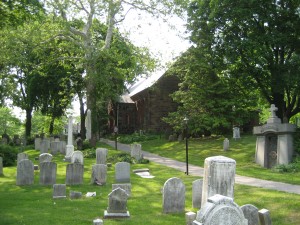When you do genealogy, you quickly discover that you have to become an expert on churches. Where were they located, where are they now, what happened to the buildings, who’s got the records? When it comes to Staten Island, which celebrated its 350th year in 2011, that’s a whole lotta church history to absorb.
Luckily, we have in our possession a handy-dandy guide to all of the churches that existed in Staten Island as of 1942. Now, this doesn’t give you all the churches that ever were, but having an inventory of extant churches at a specific point in time is a great reference. And it is a l-o-n-g list, which you will love if you are a genea-geek.
Anyway – the existence of this list is interesting, in and of itself. It’s from the Guide to Vital Statistics in the City of New York, created by the Works Progress Administration for the City of New York. It lists all the churches by borough, and describes the type of vital statistics each church held in its archives at that time – baptisms, marriages, etc. In 1942, America was at war, and it seems they needed to run some background checks on people, but the Internet was down.
The volumes are primarily designed as an aid to governmental agencies or private individuals interesting in locating corroborative proofs of the facts of birth or marital status as required for military service or engagement in war industry.
How cool is that? Helping to blow the cover of enemy spies who were bent on infiltrating our armed forces based on a fake Staten Island baptismal certificate.
I think I was born too late. I hope I worked for the WPA in a previous life.
In any case, today is the beginning of a series in which I am going to list the churches from that document for you. (In the future, I’ll feature some individual churches in separate posts, with more detail).

